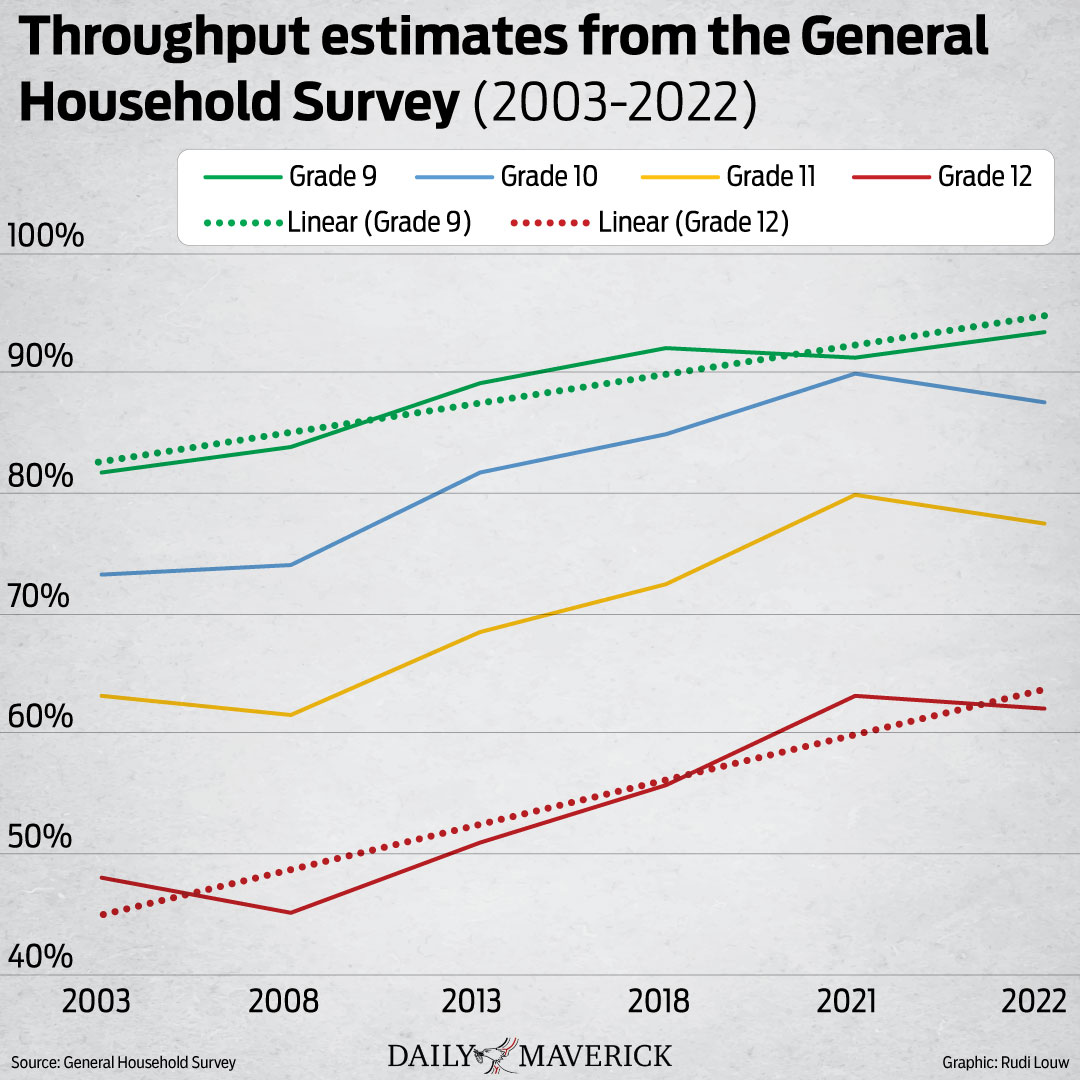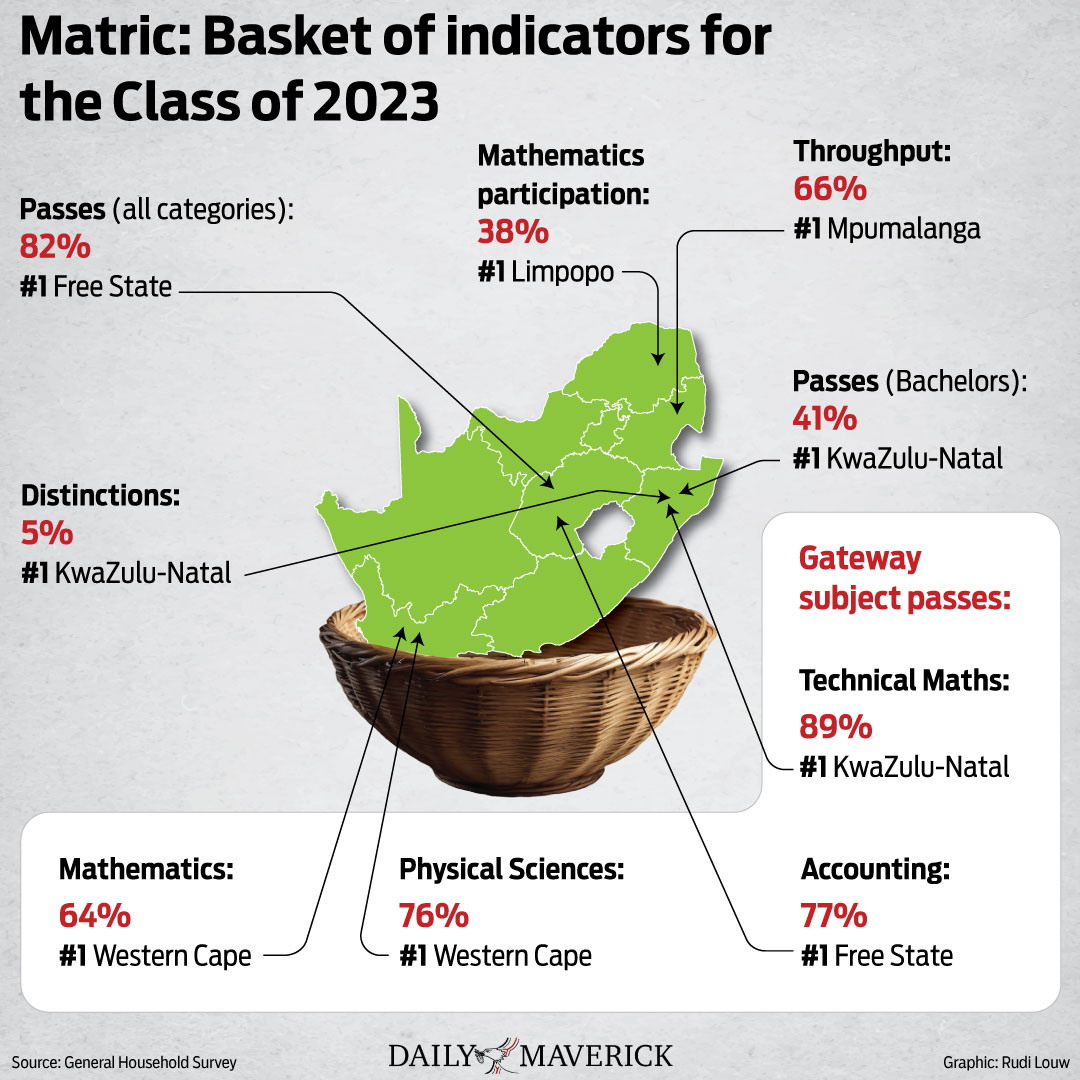MATRIC RESULTS OP-ED
Ignore the politicians and discover what’s new about the matric Class of 2023 — Part 1

To the Class of 2023, the politicians are basically saying: ‘We don’t care about your matric — it’s meaningless anyway’. This is so disparaging. We guess it is somewhat inevitable and, of course, would be louder in 2024 as it’s an election year.
The matric results for the Class of 2023 have been released. “Best ever”, we are told. “Not so fast, not so fast… the ‘real pass rate’ is much lower than the reported 83%”, says one — not to be named — political party.
Its media machinery kicks into gear and every print, radio, social media and television station is asking whether the 83% pass is correct. Then another political party takes out its dusty old songbook and screeches about “30% passes!”.
Yawn. Seriously? Do we now have this annual tit-for-tat on repeat each January? It may just be worse than a Boney-M Christmas jingle played in November. Give us a break. This is so tired. So undermining of the young people who work so hard to get each mark.
To the Class of 2023, they are basically saying: “We don’t care about your matric — it’s meaningless anyway. You just need a pathetic 30% to pass. What we care about is your peers who dropped out or are missing from school. That’s our real priority…”
This is so disparaging for their parents, their teachers and departmental officials. We guess it is somewhat inevitable and, of course, would be louder in 2024 as it’s an election year.
Let us give you a sneak peek into many a suburban dinner-time or office canteen discussion, which takes place around now:
“Let me tell you about South African schooling (and I know this right, because I have been to school — let me tell you): Matric results are meaningless. We don’t care about those who pass. It just goes up each year. It gets easier and easier. Standards drop. Too many are not in school. Our education system is getting worse. It is unfixable. Unions. Discipline. Bring back the rod. Teacher knowledge. Laziness. Incompetence. Cadre deployment. Yadda yadda. Ho hum. Pass the salt, please. This rare steak is delicious. Do share your recipe. You know Mugabe did something right with education. Why can’t we do that? Have you seen that Portugal has a new emigration option, you don’t even need to buy a house.”
Read more in Daily Maverick: The real matric pass rate and what it reveals about the government’s priorities
So is there really anything new in South African schooling? Have you heard it all before? What is different about the Class of 2023 and their results? And what does this mean about our schooling system?
What is new about matric pass rates?
Every year — for at least a decade — we have had the matric results reported by the minister of basic education. The primary focus is on the proportion of learners who pass. So if 100 students write matric, we see 83 of them passing. By now, you should know that “passing” can happen at one of four quality levels:
Level 1 Pass: You just made it. You did not fail. You are certified as a literate citizen.
Level 2 Pass: Higher Certificate level. You are not eligible for a university degree. But you have completed NQF level 4. You can get into the queue to enrol for a higher certificate at a college, technical college or university… if your marks are good enough, you might get in.
Level 3 Pass: Diploma level. You are not eligible for a degree at university. But you have completed NQF level 4. You can get into the queue to enrol for a diploma at a college, technical college or university… if your marks are good enough, you might get in.
Level 4 Pass: Bachelors level. You are eligible for a degree at university. But you have completed a quality NQF level 4. You can get into the queue to enrol for a degree at university… if your marks are good enough, you might get in.
So, when we talk about passes we have to look at the quality level of the pass.
In 2023, 83 out of every 100 matriculants passed (at all levels). This is the correct pass mark by international standards. It takes the number of students who passed and divides this by the number of matrics enrolled in the matric qualification (NSC) and converts it to a percentage. This is defined as the pass rate the world over.
We are most interested in quality passes. And the Department of Basic Education (DBE) is too. They report on them every year. This year the quality pass rate — level 4 of bachelors pass rate — is 41%. So roughly half of the matrics who passed pass with a ticket to get into the queue for university. And hold onto your hats… it’s good news again: like the overall pass rate, the bachelors pass rate has been improving over time.
Anything new about dropouts? Or is it same-old, same-old?
Finding, and counting school dropouts is hard. What happened to the missing scholars? Did they pack for Perth or Peru? Did they pass on? Did they move into a technical college? Do tik? Turn to crime? Have a baby? Leave to look after family members? We don’t know.
So rather than measure dropouts, we measure throughput (survival from birth, or entry into schooling to Grade 12). We can measure throughput most accurately by looking — not at our school data — but at our general household data. To find the children who are not in school, you have to look outside of schools. Dah!
So we look at age cohorts (people of the same age) across our population and we get this through the household survey. And the good news is (drum roll please… hats in hand): dropouts are declining. Throughput is increasing. We have a more qualified population over time.
This figure shows the proportions of youth having completed different grade levels, as per the General Household survey:

Focus first on the horizontal axis. This is the time in years. Key dates are shown: 2003, five years later, 10 years later. Covid years are missing, and then 2021 and 2022. The vertical access is a percentage of our population of youth.
Now look at the red line. That’s the proportion of youth who have completed matric. The graph is going up. The proportion of our population with matric is increasing. That means that those who don’t get matric (dropouts) are declining.
OK. We know. The above is not really new. It’s just often neglected (perhaps a somewhat inconvenient truth to those trying to use school results to win elections).
What is new is that in 2024, for the very first time, the DBE chose to report on an estimate of throughput. The DBE technical report does not make clear exactly how the estimate is obtained (we are sure an erratum will fix this, or it will be made explicit in 2025).
The estimate of throughput may be the number of students entering matric divided by the number of students entering Grade 10, three years prior. It could be the number of students entering matric divided by the number of students entering Grade 1, 12 years prior.
Either way, we now have a measure — to be sure an estimate — of survival in school. In 2024, the DBE reported a national throughput of 66%. Now we can track this measure over time. We know it has been improving…
What else is new? Reporting in matric results is new!
Well, firstly the DBE has started focusing on district-level performance. This makes sense as the unit for changing the public school system is the district. All our data is at district level. This data feeds into district improvement plans and actions.
Secondly, the DBE has introduced a basket of indicators to reflect on matric results. Louder (for those at the back, especially the media): the DBE no longer just reports on a single matric pass rate. So the 83% is no longer the headline. Get it? Got it? Good.
The DBE now reports on nine different indicators – all of which are important.

Pass rate (at all levels/categories of pass) and (2) Pass rate (at bachelors level pass) and (3) an estimate of throughput (survival to matric). All three have been discussed. These are now joined by (4) Participation rate in maths. How many learners choose mathematics over maths literacy is an indicator of the quantity of learners able to pursue STEM careers (and reason quantitatively for all the other careers).
The department also reports on the pass rates in the gateway subjects of (5) Accounting, (6) Mathematics, (7) Physical Sciences and (8) Technical mathematics. This reflects our interest in STEM and commerce careers. The proportion of distinctions (9) is reported on across all subjects (of those who wrote a subject, what proportion obtained distinctions).
Anything else that’s new?
That class of 2023 included a 65-year-old who passed. People incarcerated are getting distinctions. Oh… and we still have a boy problem. There are too few boys who remain in schools and who get quality passes.
In part two of this article we present report cards for each province. Using the basket of indicators we now get a true sense of who is doing what in terms of quantity, quality, equity and redress. DM
Prof Nicky Roberts is the director of Kelello Consulting and an extraordinary Associate Professor at the University of Stellenbosch. She specialises in mathematics, languages and technology-enhanced learning. Prof Zanele Ngcobo is an Associate Professor in the School of Education, University of KwaZulu-Natal. She specialises in mathematics education. Dr Lydia-Anne Plaatjies is an adult educator, multi-media producer and director of active citizenship focusing on youth speak leaders. They write in their personal capacities.
Read more in Daily Maverick: The Matric Class of 2023 (Part 2) — comparing SA’s provincial report cards





 Become an Insider
Become an Insider
Where is the black line? Clearly the authors of this article didn’t do Maths either.
Great article. Written using sound analysis and with a tinge of humour! Nice to understand that there has been some progress.